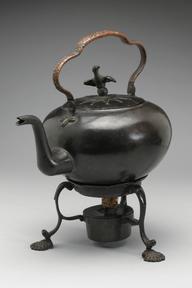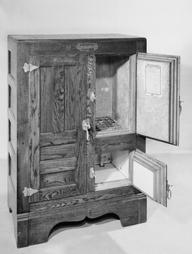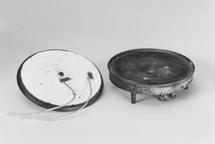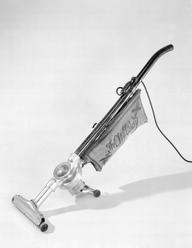

A flexible hairbrush with beige and black bristles, patented by Charles Hancock. The brush is rectangular and has no handle.
Hairbrushes were traditionally paddle-shaped and made out of metal or wood, meaning they were rigid. It is said that a rigid hairbrush can cause more pulling or tearing on the hair, whereas a flexible brush is gentler.
This particular brush was patented by Charles Hancock (1800-1877), a member of the Hancock family of Marlborough, England. Charles Hancock was an inventor and a painter known for his invention of ‘scentless watercolours’ in patent rubber bottles, and his paintings of animals, particularly horses. He exhibited at the Royal Academy with 25 pictures.
He later worked with the Gutta Percha Company, and by 1850 had set up the competing West Ham Gutta Percha Company with his brother Walter. This company produced a wide variety of products made from the naturally-derived latex material gutta percha, ranging from household items such as candlesticks and bed pans to more industrial items such as valves and tubing.
This object is part of a collection relating to the Hancock family, acquired in 2018 from a descendant and family historian of the Hancocks. The collection comprises portraits covering 4 generations of the Hancock family, personal and business archives, and a series of related objects. Thomas Hancock is the centre of the story – inventor of the patent masticator and founder of the British rubber industry. The Hancock company ran until the 1930s, led by Thomas’s nephew and assistant, James Lyne Hancock, and then a great nephew John Hancock Nunn.
Details
- Category:
- Domestic Appliances
- Object Number:
- 2018-576
- Materials:
- rubber and wood (unidentified)
- Measurements:
-
overall: 200 mm x 50 mm x 50 mm,
- type:
- hairbrush




